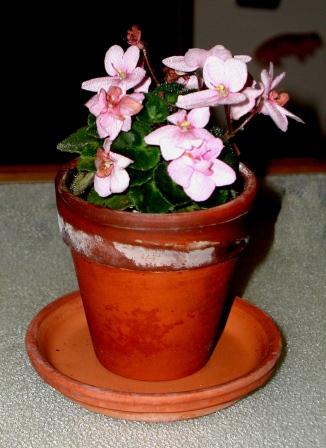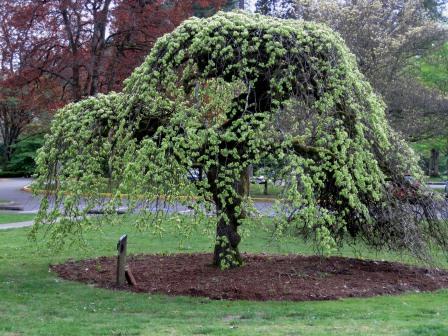Last Sunday’s New York Times had a story about immortal jellyfish. It was interesting, and given my previous life as a marine biologist, it was also a topic that was comfortably familiar. But really, I wasn’t that impressed. Because plants do the same thing, yet no one bats an eye.
Gardeners and other plant aficionados have exploited the plant kingdom’s ability to remain forever young. How many of us have taken cuttings of mature plants, rooted them, and started new ones? I have a couple of miniature African violets whose leaves I can place on damp soil in pots, cover, and ignore. New plantlets emerge from the base within a few weeks. I pot these up and give them away as gifts, but always keep a few for later propagation.

Some of the horticultural oddities we love exist because of plant immortality. The Camperdown elm (Ulmus glabra ‘Camperdownii’) has been perpetuated for almost 200 years from a single original cutting from a tree in Scotland. Particularly pernicious weeds do this on their own thanks to runners and rhizomes. Sure, we call it “vegetative propagation,” but really, it’s plant immortality.

So you’ll have to forgive me for not getting all torqued about immortal jellyfish. I’ve seen immortality, and it’s growing in my garden.
This definitely opens up a whole new way I look at plants… How expertly put!
Now instead of just saying that mint has “Ravaged my yard” I can just claim that it’s IMMORTAL… 😀
Yes! A couple of weeks ago I put outside (with regret) a pair of common red pelargoniums I had grown from a friend’s cuttings twenty-two years ago, and was sad not to be able to keep them, as they bloomed reliably as houseplants all year, and always looked great. They had always been bulletproof, but last summer some ravenous green larvae latched on and decimated the foliage, and I decided to do a little plant-culling, otherwise I’d have continued to grow them. My night-blooming cereus comes from cuttings from my mother’s plant, which came from her mother’s plant, which came from her mother’s Victorian-era plant. I like having these oldies around, and knowing that they may well outlast me.
Of course, there’s also “Pando,” the quaking aspen clone in Utah’s Fishlake National Forest that some estimate to be anywhere from 80,000 to ONE MILLION years old! (http://www.nature.com/scitable/knowledge/library/case-study-the-glorious-golden-and-gigantic-13261308)
When I first attended college for landscape & design, two acres were available at my mother’s home: my plant collection and experimental zone. Why I never planted a Camperdown Elm … have no idea, because many other trees were collected. In 30 years, I’ve only pruned maybe a dozen, and
never planted any. Still rare in the Portland landscaping, although more commonly sighted than Bigfoot.
Cheers,
MDV
Thank you for this great information! The secret of immortality!
please accept thanks